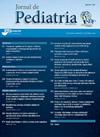使用分段测量法推断儿童和青少年的身高与直接测量身高的比较:一项横断面分析研究。
IF 2.8
4区 医学
Q1 PEDIATRICS
引用次数: 0
摘要
目的:在儿科医生的临床日常工作中,身高是评估生长情况的最可靠指标。然而,在某些情况下无法直接测量这一参数,因此身高或身长的估算成为一种有用的替代方法。本研究的主要目的是确定上臂长度(UAL)、胫骨长度(TL)和膝跟长度(KHL)等哪种分段测量方法能提供最接近直接测量身高的身材估计值:对 248 名 0 至 14 岁参与者的人体测量和节段测量进行分析性横断面研究,使用史蒂文森和木原方程估算间接测量的身高:结果:测量结果与实际身高偏差最小的节段测量值是 KHL,其次是 TL,两者均使用史蒂文森方程计算:结论:使用节段测量法推断儿童的身材在临床实践中很有价值,尤其是对于卧床不起和丧失劳动能力的患者。根据目前的研究结果,KHL和TL节段比UAL得出的结果更准确。本文章由计算机程序翻译,如有差异,请以英文原文为准。
Inference of stature using segmental measures in comparison with directly measured height in children and adolescents: an analytical cross-sectional study
Objectives
In the clinical routine of pediatricians, height is the most reliable indicator for assessing growth. However, there are situations where it is not possible to measure this parameter directly, making the estimation of height or length a useful alternative. The main goal of this study is to identify which segmental measure, including upper arm length (UAL), tibial length (TL), and knee-heel length (KHL), provides the stature estimate that most closely approximates directly measured height in the study participants.
Methods
Analytical cross-sectional study of the anthropometric and segmental measures of 248 participants, aged 0 to 14 years old, using Stevenson's and Kihara's equations to estimate indirectly measured height.
Results
The segmental measure that provided a measurement that deviated the least from the actual height was the KHL, followed by TL, both calculated using Stevenson's equations.
Conclusion
The use of segmental measures to infer a child's stature is valuable in clinical practice, particularly in bedridden and incapacitated patients. Based on the present findings, the KHL and TL segments yielded more accurate results than the UAL
求助全文
通过发布文献求助,成功后即可免费获取论文全文。
去求助
来源期刊

Jornal de pediatria
医学-小儿科
CiteScore
5.60
自引率
3.00%
发文量
93
审稿时长
43 days
期刊介绍:
Jornal de Pediatria is a bimonthly publication of the Brazilian Society of Pediatrics (Sociedade Brasileira de Pediatria, SBP). It has been published without interruption since 1934. Jornal de Pediatria publishes original articles and review articles covering various areas in the field of pediatrics. By publishing relevant scientific contributions, Jornal de Pediatria aims at improving the standards of pediatrics and of the healthcare provided for children and adolescents in general, as well to foster debate about health.
 求助内容:
求助内容: 应助结果提醒方式:
应助结果提醒方式:


